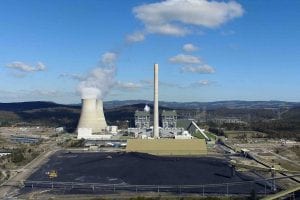It is perhaps not surprising that the fossil fuel industry has hit the panic button and is pushing hard for the Turnbull/Abbott Coalition government to dump the proposed clean energy target and replace it with something that might be called a coal energy target.
They can see what’s coming – and there is probably no better way to describe it than a solar juggernaut.
The fact that solar will become the dominant energy source appears to be under no doubt, even the International Energy Agency admits it. And the CSIRO and AEMO appear to be in agreement that even behind the meter solar will account for around half of all demand by the 2040s or 2050s.
But what if it happened a lot quicker than that? Australia’s grid prices have jumped again to absurdly high levels, and this has lit a fire under the rooftop solar market, which will be followed by a major push by corporate buyers into the large-scale market. The solar sector could boom in ways not previously imagined.
Huon Hoogesteger heads Smart Commercial Solar, a company specialising in rooftop solar for businesses that has experienced a doubling in demand in the last year or so, and a three-fold increase in the current year. He can’t see it slowing down.
At this week’s All-Energy Australia conference he was asked to speak about the implications of a continued solar boom in the Australian energy market, and what it means for incumbent fossil fuel generators, and others – particularly the storage industry. It was a fascinating insight.
First of all, it should be noted that Hoogesteger focused only on solar – so his observations take no account of the 4.5GW of wind energy already in the market, and the likely doubling of that capacity in coming years (particularly as it defies doubters and matches the falling cost of solar).
But just taking a look at solar itself; Hoogesteger took data from Ausgrid to imagine what 30GW of solar looks like on the National Electricity Market (the eastern states). You can see that in the graph at the top of the story.
It is only a representation, but it clearly shows that at noon, it will remove all demand – something that the market operator is expecting to happen in South Australia and Western Australian within a decade, if no other measures are taken.
Hoogesteger says most forecasts are based around a continued linear uptake of solar, that puts the country’s capacity at about 21GW in the mid 2030s.
This is what 20GW of solar looks like on the grid (without added storage). Hoogesteger applies three categories to existing generation: dispatchable, which can switch easily; vulnerable generation, which suffers financial losses; and critical generation, at which point there are serious engineering problems.
Even at 20GW, this is creating issues, without storage. And it is a situation that is not so far away.
Base on his experience, with a near doubling of just rooftop installations, the massive investment in large-scale solar, and the technology’s falling costs, along with high grid prices, he says it could happen a lot quicker than that.
This graph above shows business as usual, compared to scenarios where solar grows at 30 per cent more than anticipated (green line), 50 per cent more than anticipated (orange line), and a doubling of the growth rate (red line).
The latter takes Australia to a grid penetration of 20GW of solar – rooftop and large-scale before the end of 2021. That may seem highly optimistic. But the other two scenarios – hitting this level between 2023 and 2027 is entirely likely.
“We are heading towards a renewable future faster than anyone thought they were,” Hoogesteger says. “But we are not thinking far enough ahead. This scenario could be only a few years away, but there is no policy development towards this.
And here is what that may look like. After 32GW of solar and some 105GWh of storage, the grid is balanced out, more or less managing both the critical levels for engineering and the viability-affected that might be hit by changing finances.
Of course, having a lot more solar – some 55GW – and accompanying storage, changes the situation dramatically, and highlights how the business model for energy markets will have to change significantly.












